One spring day in April 1986
Imagine being torn from your homes with only an hour’s notice. You frantically cram belongings into the one small backpack you may take. Promises of an imminent return reassure as you are herded onto buses to be hosted by unwilling families in neighbouring villages. Everything you know and love left behind, slowly left to wither and decay.
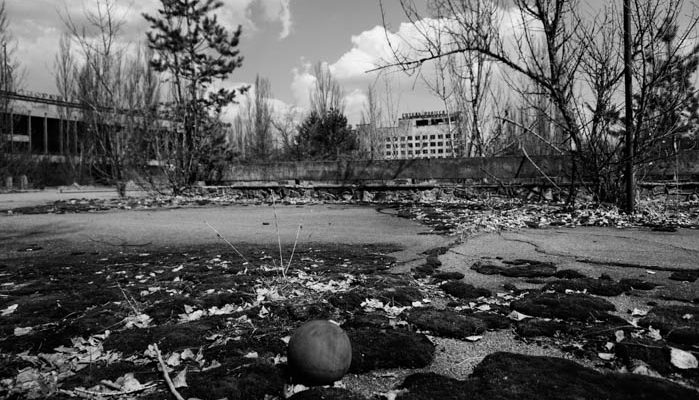
This may sound like an apocalyptic movie but this was a reality for the 50,000 inhabitants of Prypiat. The city was home to workers at the Chernobyl Power Plant that suffered a catastrophic accident on the 26th April 1986. Little did we know it at the time, but Europe narrowly avoided becoming a wasteland. The swift action of many brave civil and military personnel (known as liquidators) worked valiantly to contain the fallout. In doing so, many sacrificed their lives.
Chernobyl accident
On that fatal day, operators of the Chernobyl plant carried out a routine safety test. Human error, a lack of safety protocols and a flawed reactor design lead to unimaginable devastation. The accident was responsible for the largest uncontrolled radioactive release ever recorded! At least 5% of the deadly radioactive reactor core escaped into the atmosphere. Two plant workers died instantly and a further 28 followed from acute radiation poisoning.
Thankfully, the damage was contained as:
‘if the other three reactors of the Chernobyl power plant had been damaged by the explosion of the first, then hardly any living and breathing organisms would have remained on the planet.’ (Serhii Plokhy in his book ‘Chernobyl: History of a Tragedy’)
The secret is out
During the height of the Cold War, the Soviets were reluctant to alert the world. A veil of secrecy was imposed, but on the 28th April, a huge radioactive cloud floated into Swedish airspace. Workers at the Forsmark Nuclear Power Plant failed routine radiation screens. Mystified scientists carried out tests on a worker’s shoe and were appalled by the results. Much higher than usual levels of radioactive elements were detected, and it was evident something ominous was afoot!
Through analysis of wind direction and speed, the Swedes quickly deduced the source of the radiation. They uncovered the Soviet’s deathly secret.
The making of a ghost town
Meanwhile, in Prypiat, thousands were forced to flee and leave behind life as they knew it. With only personal documents and a few meagre possessions, they were hustled onto 1,300 buses. They left the town and lifestyles which were the envy of their friends. With superior salaries, better supplies of agricultural and consumer products and access to fully equipped medical and educational facilities, residents of Prypiat enjoyed many perks.
Town attractions included a theatre, sports facilities and an Olympic swimming pool. An amusement park was scheduled to open on May Day weekend. Sadly, the Chernobyl accident put an end to celebrations in Prypiat. The park lay silent, and the Ferris Wheel that never turned now rusts under stark skies.

Instead of squeals of children, the only sound is that of birds tweeting and rides creaking in the breeze. This modern-day ghost town is a symbol of despair and hopelessness.
The residents, equally forlorn, were unceremoniously dumped into temporary housing, without possessions, jobs or hope. Many suffered PTSD and alcoholism aggravated by fears of painful radiation-induced illnesses.
Alerting the globe
Under repeated pressure from the Swedish, two days later the Soviets finally confirmed that an accident had occurred. They suggested everything was under control and no mention was made of rising radiation levels or the evacuation of Prypiat.
Time to visit Chernobyl Exclusion Zone
Almost 33 years to the day of the disaster, on a sunny spring day, we board a rusty soviet era bus to begin our journey to the Chernobyl exclusion zone. The original exclusion zone was a 10km circle around the site but it was extended a further 20km in May 1986. It now covers an area of 4,760 km from which as many as 116,000 evacuees were displaced!
Their previous stomping grounds pay silent homage to the terrible destruction unleashed that day. Forlorn buildings languish under snaking branches, sagging ceilings and crumbling concrete. Inside, the impact of decontamination is evident from the blistering wallpaper which peels from the walls.
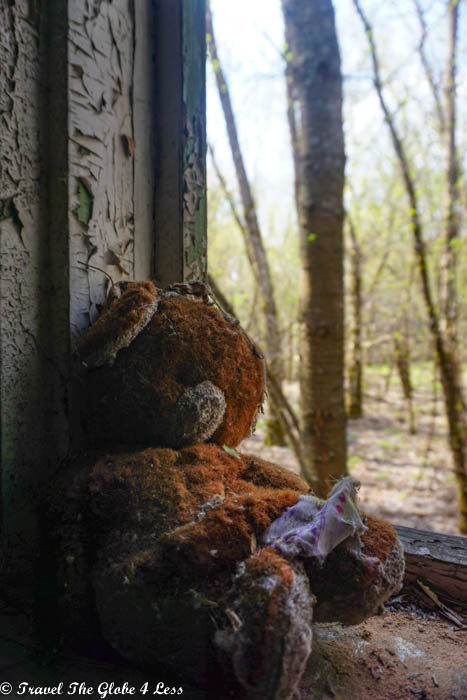
Life in the Chernobyl exclusion zone
For some of the evacuees, assimilating into a new life proved far worse than what they left behind. Within a year, more than 1,000 people returned. They sacrificed a new apartment in favour of more spacious homes in the countryside.
Although it is technically illegal to live within the exclusion zone, around 150 still remain. The average age of those who remain is between 80 to 90 years old. It clearly hasn’t caused them any lasting damage because the average age in Ukraine is 72. These people live in rudimentary dwellings with no facilities or services.
Zalissya
Our first stop on the tour is the small village of Zalissya. Nestled in woodland alongside a picturesque road, the only sounds are those of birds and the wind rustling through the trees. As you wander shrivelling paths, branches occasionally bar the way and it’s hard to imagine the fear and despair of the residents as they fled for their lives.
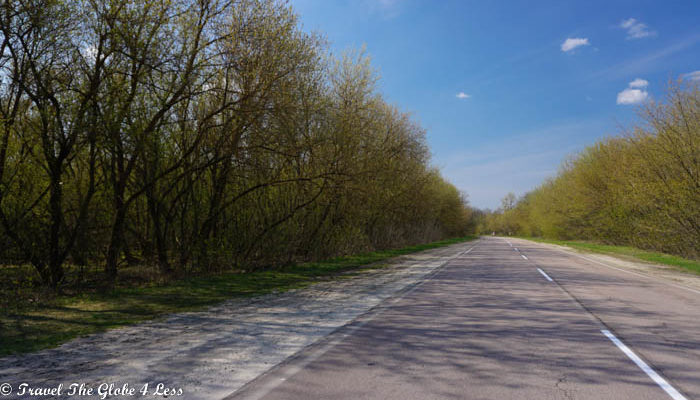
You can explore small houses and outhouses slowly being reclaimed by Mother Nature. Broken windows, rotten floorboards and exposed foundations are common. Apart from a stray wellington, kettle or teddy bear, there is little to hint at life before the accident.
Decontamination in Zalissya
In the aftermath of the disaster, decontamination teams plundered TVs, radios and other items to bury them in huge pits to contain the radiation. Buildings were doused in water and chemicals to dispel the isotopes and remove radiative dust.
Whilst tourist numbers to Chernobyl increase rapidly, it won’t be long before there is little to see. This is not your usual tourist attraction. Tourists must sign a disclaimer before they can enter which clearly states that the exclusion zone is not an amusement park. No sanitization has taken place, and health and safety precautions are limited. Ceilings bow, shards of glass litter the ground and floorboards creak and groan under the weight of curious tourists.
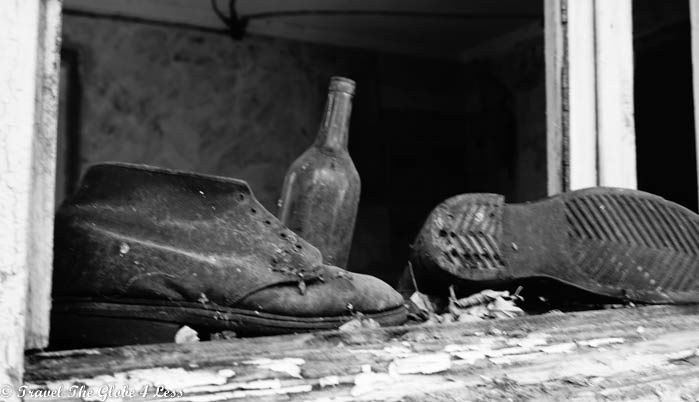
Wandering through dilapidated outbuildings, strewn with a random boot, beer bottle of pot and pan, it’s unfathomable to imagine the events of April 1986. Which child left behind the lone teddy bear in the window? Did the owner of the two shoes left to bake in the sun no longer need them? Or, were they simply too toxic? Was the kettle swaying in the breeze brewing a cuppa when the alarm sounded for residents to leave? Why were these items spared when so many other objects were destroyed?
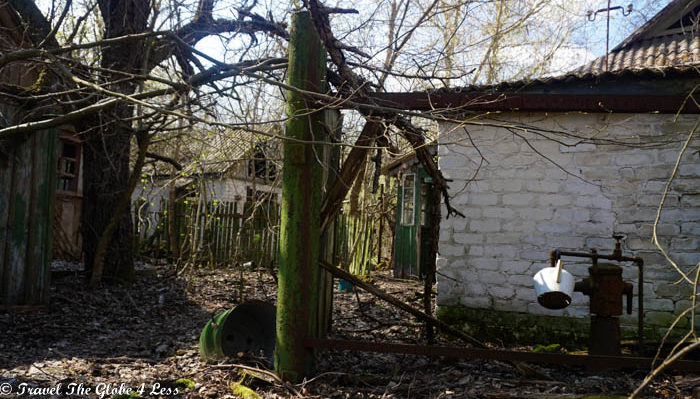
Even with the hoards of visitors (at least 300 – 400) the village is poignant and haunting.
Kopachi
Our second stop is the village of Kopachi. This village was more contaminated than others because its wooden houses absorbed more potent radiation. It was impossible to do decontaminate houses individually, so houses were swallowed whole into giant burial mounds. There is little to see but for small hillocks, a memorial to each home that once stood on the spot.
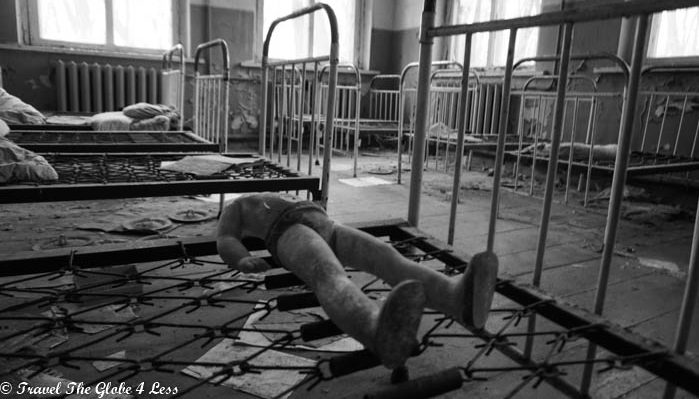
The concrete kindergarten is the only standing building as concrete was easier to decontaminate but it has to be the most harrowing
The Kopachi kindergarten
Regardless of what you read before you visit, nothing will prepare you for the haunting site of rows of tiny bunk beds covered in radioactive dust. Even without the spectre of nuclear disaster, the dormitory is depressing, more reminiscent of Romanian orphanages than a children’s nursery.

Random toys lie abandoned, sheets of music flutter despondently, and children’s shoes sprinkle the floors as though forgotten in the panic. Dolls miss limbs, like characters from a horror movie, but the periodic beep of the Geiger counters reminds us that this is far from a film set. The guides alert us to hotspots of radioactive activity which I steadfastly avoid.
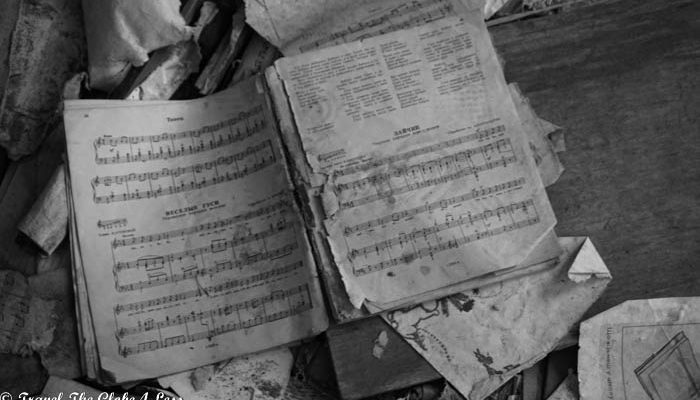
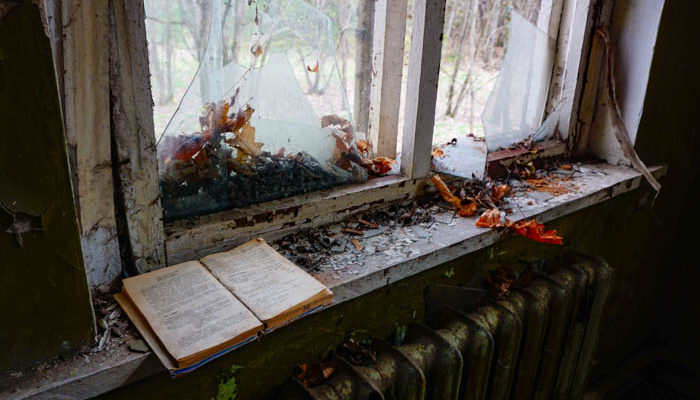
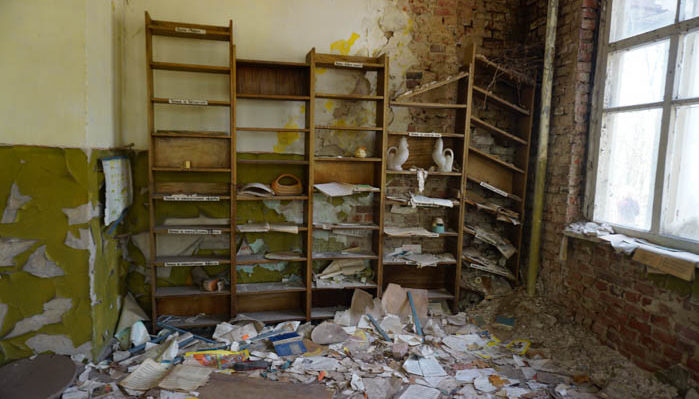
Ghost town of Prypiat
Before lunch, we move onto Prypiat. This is where the bulk of the plant workers lived, surrounded by upmarket restaurants, hotels and supermarkets. It reminds me of the Hunger Games with residents divided into one of five districts.
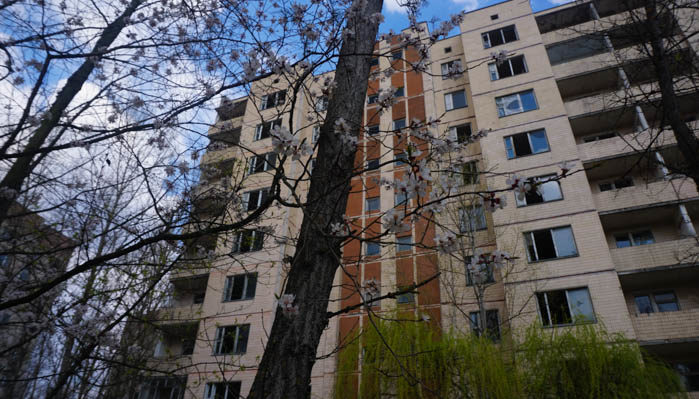
In the fairground, instead of the excited screams and cries of children, the only sound is that of a lone swing swaying in the wind. Gently it turns in the breeze as though an unseen hand propels it. Dodgems rust forlornly in a crumbling pavilion and the Ferris wheel stands lifeless. It’s a haunting place but instead of the paranormal, the spectre of radiation is ever present. The Ferris wheel silently harbours deadly pockets of radiation beneath its cars.
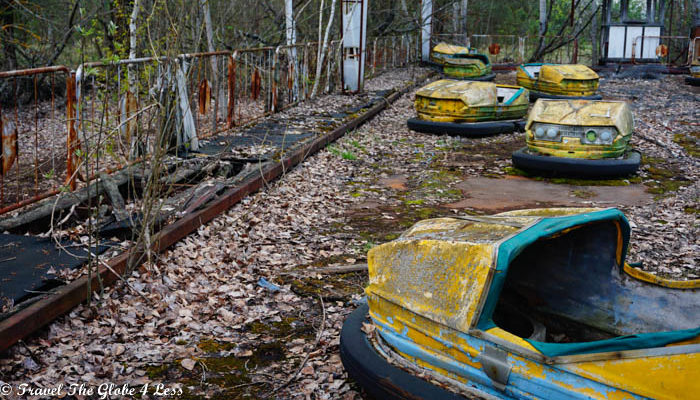
A number of the underground basements store equipment used for decontamination and are the most radioactive spots in the city. Miraculously, few residents suffered from radiation poisoning in the aftermath of the accident, despite ‘four hundred times more radioactive material (being) released than at the atomic bombing of Hiroshima’. Now that is a seriously scary statistic!
Compensation for losses at Prypiat
Of course, that doesn’t change the heartache residents must have experienced when they were suddenly uprooted. The offer of a new apartment and extra pension was little consolation for the radical life changes they suffered overnight.
We visit a school set around a courtyard. Room after room filled with dust-covered toys and books scattered across the floors await us expectantly. I wonder whether it’s pure coincidence that the dolls all appear to be deformed. Many have limbs or heads missing whilst others sit in strange positions curiously watching tourists pick amongst the debris in search of the perfect souvenir photo. It’s mildly disturbing, and I half expect one to come to life like something in a Chucky movie.
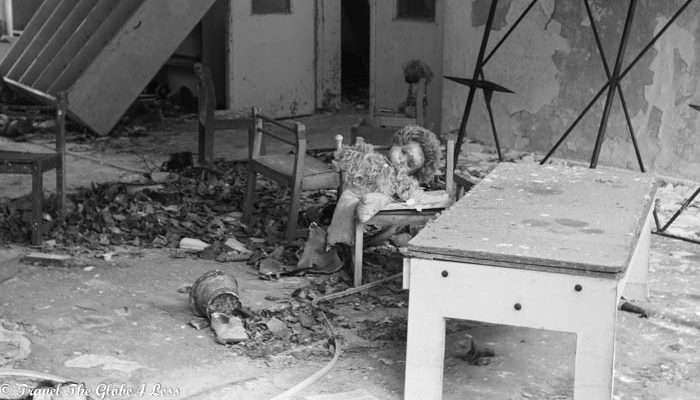
The Chernobyl sarcophagus (ChNPP)
We move on to the site of the nuclear reactor and I recall a time when the Russians were our sworn enemies. Nuclear power was a terrifying deterrent, given the potential for mutually assured destruction (MAD indeed!) and unprecedented ecological disaster. I remember the day when I heard the terrible news of the incident and how it threatened to destroy our way of life.
Immediately following the disaster, a shelter was erected over the site which ‘locked in 200 tons of radioactive corium, 30 tons of highly contaminated dust and 16 tons of uranium and plutonium’. But amazingly, three remaining reactors continued to operate for a further 14 years.
The original shelter had a lifespan of only 20 – 30 years. With the help of funding from 40 countries and at a cost of $1.5 billion, a new sarcophagus is now in place. It has an expected lifespan of a hundred years. The site is likely to be reactive for up to 24,000 years so the cost to contain this accident will impact many future generations.
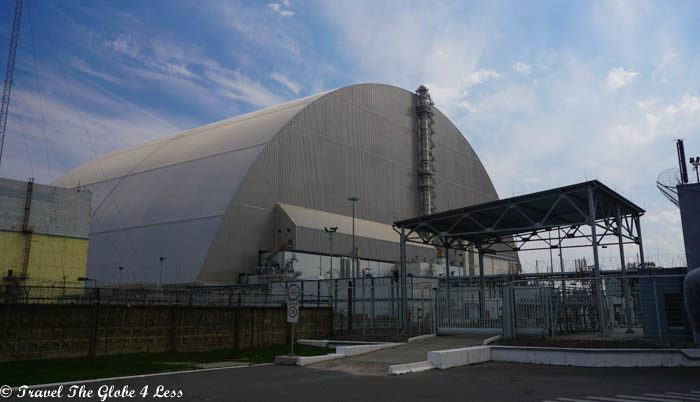
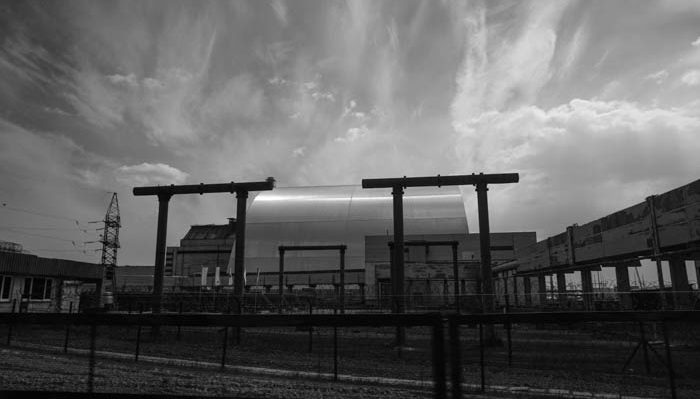
The new shelter is the biggest moveable structure in the world. It measures 843 feet across, 355 feet high and 492 feet in length and took two weeks to move into position in 2016. It encompasses two layers of steel and withstands corrosion, hurricanes and earthquakes but not the passing of time.
Radar Duga -1
After lunch, we head to Radar Duga which is also in the Chernobyl exclusion zone. This site is unrelated to the power station other than by location. It is nevertheless a poignant reminder of Cold War hysteria. Each tower holds twenty vibrators that interpret US communications and the remnants of an old computer room remain nearby. Everywhere, discarded computer servers and numerous listening devices litter the ground.
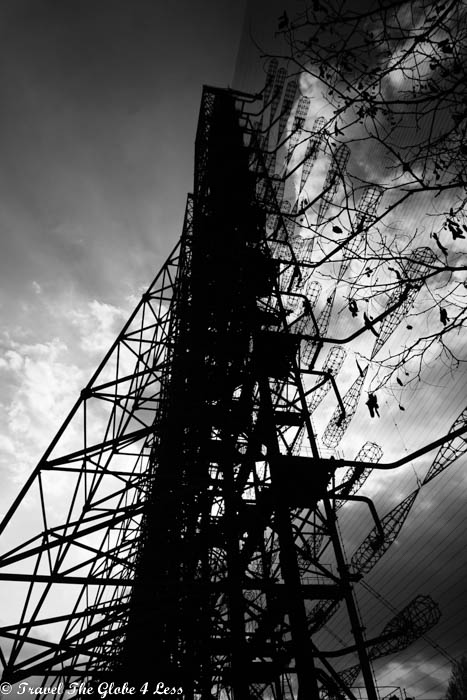
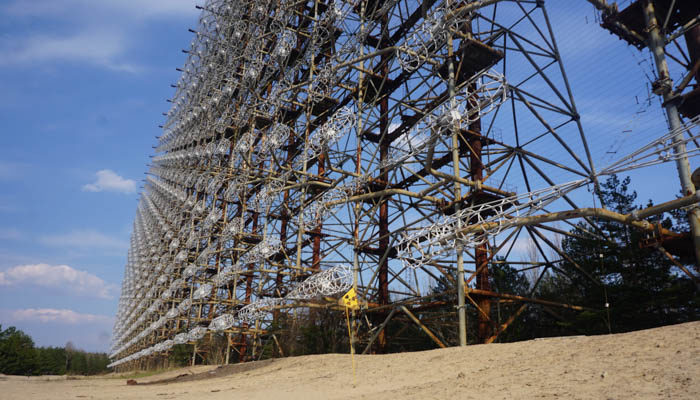
I chuckle as I see the pictures showcasing possible threats from the west. They look like sophisticated kindergarten pictures given we now live in the age of social media and instant information.
Chernobyl monument
Our last stop of the day is the beautiful memorial to the liquidators. These comprised firefighters, civil and military personnel many of whom had little choice to participate in the cleanup. The Nuclear Health Organisation estimates that as many as 600,000 liquidators helped with the cleanup.
Some were subject to very high doses of radiation but this article from the Nuclear Health Organisation offers some surprising insights into the health impact of the disaster. Only around 1,000 emergency workers on site at the time of the incident suffered radiation sickness. Far more, suffered from post-traumatic stress and other related illnesses.
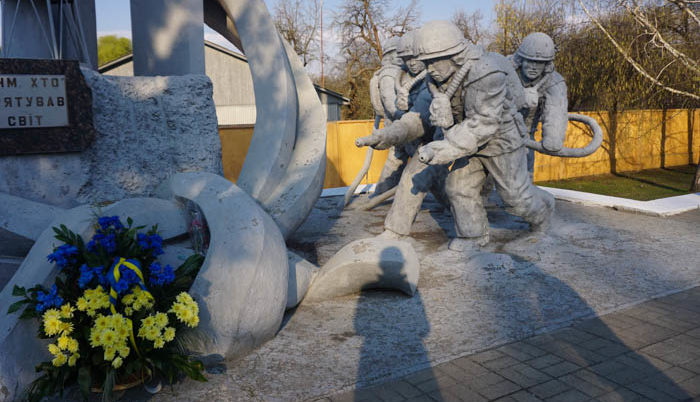
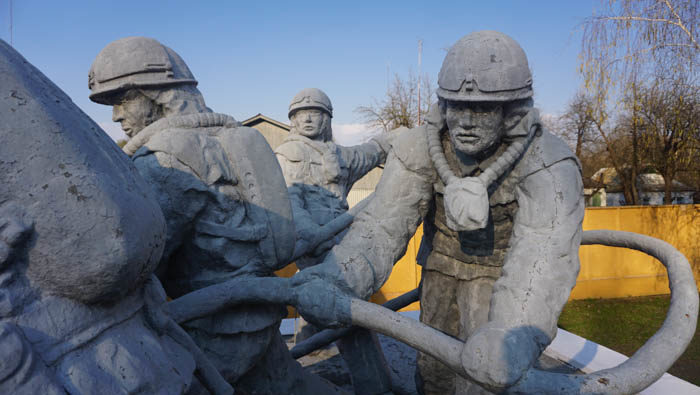
Visiting Chernobyl practicalities
If you would like to visit Chernobyl but have concerns about safety, read on to discover everything you need to know.
Is it safe?
The first question most people ask when considering a trip to Chernobyl is whether it is safe. Ironically, the biggest danger in the Chernobyl exclusion zone isn’t radiation poisoning, but other less invisible hazards. This is an area in decay, where the elements wreak havoc on structures already ravaged by intensive decontamination. However, if you read and abide by all the instructions and rules of your guide, you will be fine.
Here are our top tips for a visit.
Don’t forget your passport
Even today, the exclusion zone is a veritable no man’s land. To access, you need a permit and full identity documents.
Protect yourself against radiation
Our guide explains that we should not sit, lean or place anything on the ground in the exclusion zone. We also should not touch any items or try to take a memento from our visit in case radioactive particles attach to our bodies.
Despite this, it is surprisingly safe to visit the exclusion zone. In 8 hours you will receive the same level of radiation as you would in 24 hours in Kiev or one hour on a plane! The average radiation for our tour was 0.003 mSv which is well below acceptable levels for Ukraine.
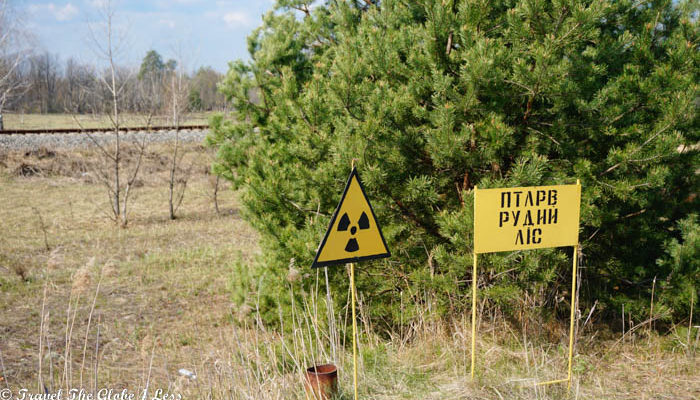
Before you enter the zone you must sign a form to consent to decontamination if you fail a radiation test. I imagination enforced nakedness and showers in cleansing substances before leaving in a white boiler suit!! Ooh, I shudder at the thought!
The tests are similar to those you pass through at an airport and pick up traces of radioactive elements. Security staff also scan your vehicle for radiation so don’t attempt to smuggle a memento. This literally could send you to prison!
First aid kit
The joining instructions for our tour advise guests to bring a first aid kit which I initially thought a little over the top. Having been to the site, I would recommend you do the same. Shards of glass, crumbling concrete, and plenty of trip hazards exist in the villages and buildings. Rusting nails peek through rotting floorboards and several times we decided not to enter houses due to ceilings which looked in danger of collapse.
Pay attention to where you put your feet and watch out for rotting floors, drooping ceilings, rusting metal and glass shards.
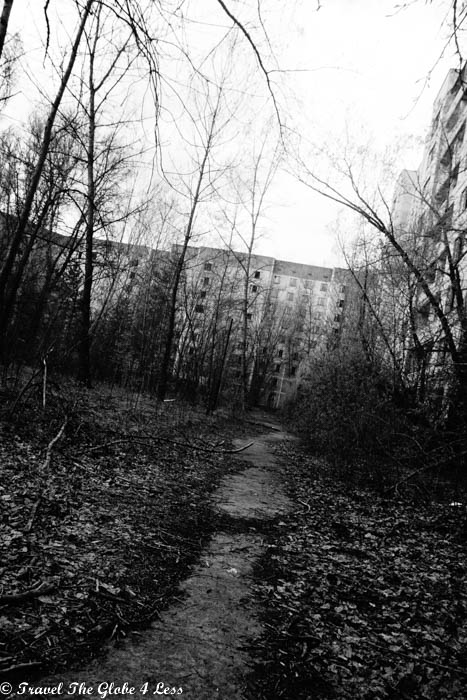
Toilets
Take tissues or toilet paper with you. As you can imagine toilets are infrequent (after all there’s no reason to maintain toilets in no man’s land!) and lack paper. You may also wish to bring hand sanitiser in case of water shortage.
Drinks and snacks
The trip includes lunch but it is basic. If you are a fussy eater you may wish to bring your own sandwiches and drinks. The guides warn you to not eat or drink outside as this increases the chance of you absorbing radiative particles. Before you can access the restaurant, you will go through a radiation scanner to ensure you do not contaminate this zone.
There are no shops or facilities within the exclusion zone so stock up on food and drink before the trip or during your time at the border control. You can refill water bottles at the canteen although it was in scarce supply when I tried. Despite assurances that it was non-toxic, I was not keen on the taste either.
Location
You will travel 2 hours north of Kiev, just south of the Belarus border to find Chernobyl. Trips depart around 8 am and return around 9 pm so prepare for a long day.
Disabled access
The Chernobyl exclusion zone is not a tourist attraction. You will clamber through overgrowth and over rubble, navigate decaying stairways and other obstacles. I estimate we walked over 7 miles throughout the tour so this trip may not be suitable for the infirm or elderly.
If you have a severe physical disability or struggle to walk it might be sensible to contact a tour company who can offer a private tour. Ask them if they can accommodate your needs. It is also possible to book longer visits to the exclusion zone staying in a hostel or hotel within the zone. This might be another option for you.
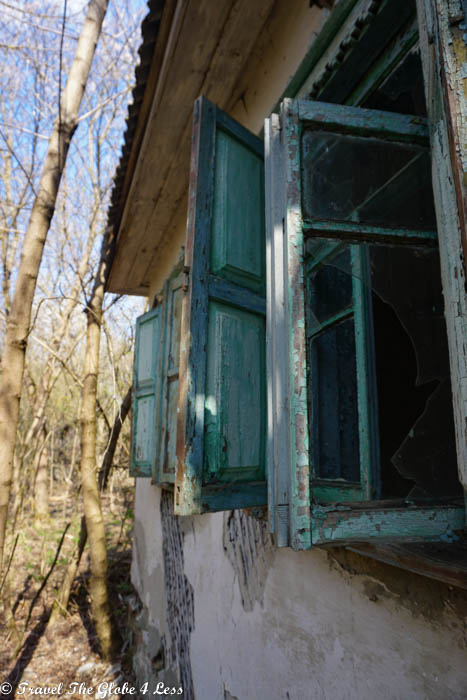
How much does it cost?
You can book your tour with Get Your Guide from £77.80 per person. It is worth every penny!
Our verdict
What I find most astonishing about the Chernobyl exclusion zone is how serenely beautiful it is. With the exception of the starkly communist town of Prypiat, the zone is largely arable countryside and dense woodland. A smattering of lakes and rustic villages remind me of the flatlands of Belgium, and it’s hard to reconcile this serenity with the utter devastation unleashed here.
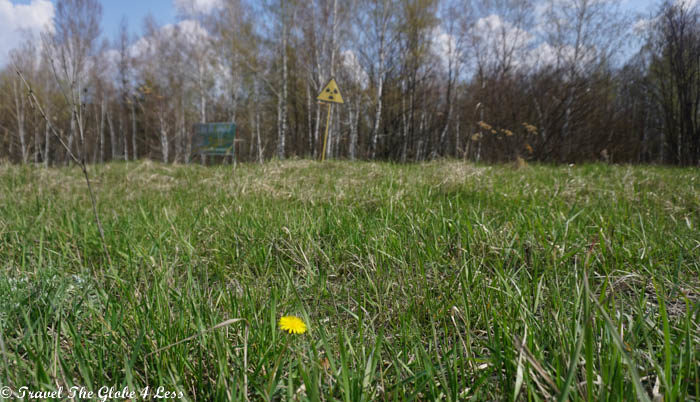
For a poignant reminder of the dangers of nuclear power, this is a day trip unlike any other. It should not be missed if you are planning a visit to Kiev. It will give you a remarkable insight into the tragedy and ensuing horrors.
Chernobyl drama
By coincidence, as I write this, trailers on TV advertise a mini-series about Chernobyl (I am so excited!!). If you want to learn more about this incident and the events that followed, tune in and come and share your thoughts in the comments below.
Other things you need to know
We stayed at the Senator Victory Square using airmiles from Miles and More. The rooms were comfortable and spacious, but it is quite a long walk to the old town. Check out other options on hotels.com.
 From Miles to Smiles Stylish travel for professionals seeking luxury at affordable prices
From Miles to Smiles Stylish travel for professionals seeking luxury at affordable prices
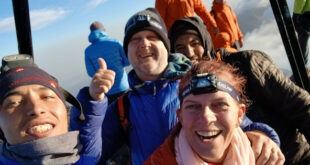
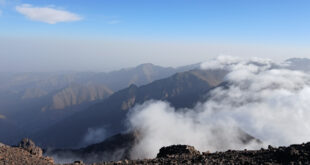
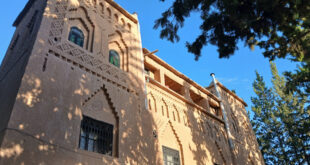
If you’re really interested then go. Otherwise, even if slightly interested, you may be not happy years later when you find you have lung cancer from breathing in a hot radioactive particle. I am willing to enjoy the photos here but I will not go.
I can understand your concern. Indeed I felt the same when I first realised you could visit Chernobyl. I encourage you to do more research before deciding however as the radiation you receive during a day is less than what you receive during a flight!
Great article. How much was the cost of the tour?
Good question! Not sure why I didn’t include that but we paid $99 each. It’s not the cheapest tour but it is worth every penny.
Sounds very sombre and sobering. And fascinating
It was. It’s really strange because it doesn’t feel depressing like Auschwitz or the killing fields. It’s more like being on the set of a horror movie. It’s just a bit macabre but the more I read the more fascinated I am!